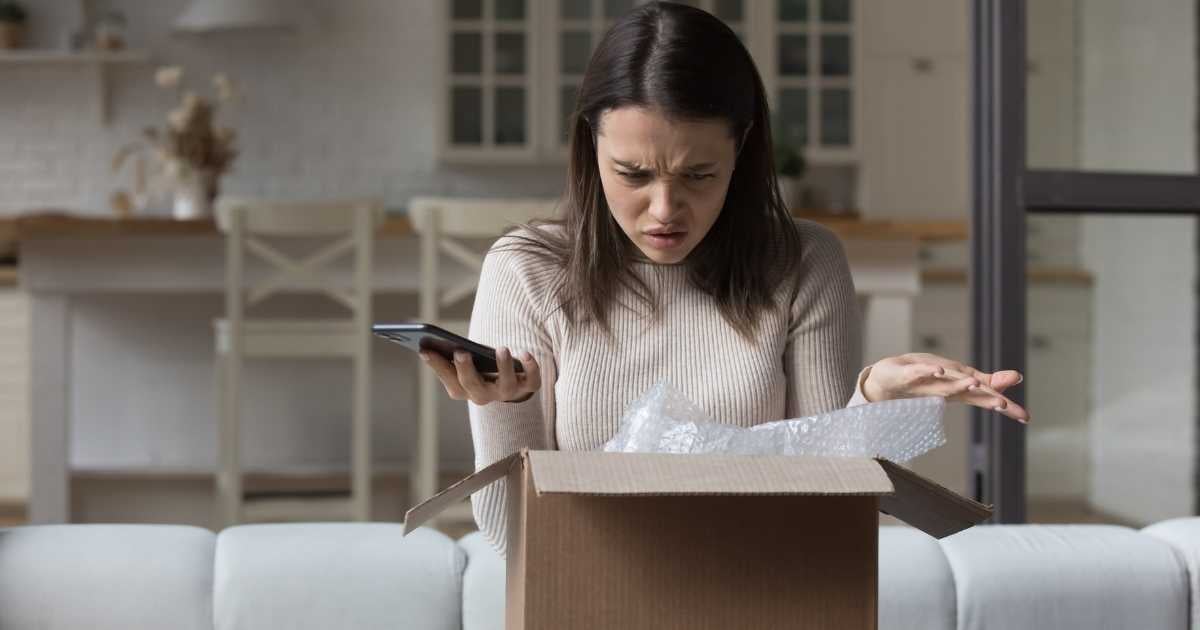Most people don’t give a second thought to the packaging of the products they use — until they encounter packaging problems. Not to mention that while some packaging problems are apparent, others may be less well-known and yet are equally critical to positive customer experiences and brand outcomes.
Ultimately, poor packaging can lead to reduced product quality, higher costs, and lower sales, which is why it’s so important to consider packaging as part of the product planning process.
Whether starting from scratch with your product packaging or looking to improve or update existing product packaging, we’ve got you covered with this roundup of five common packaging problems — and tips for solving them.
1. Durability
The first and foremost consideration when designing product packaging is durability. If the packaging doesn’t protect its contents and they become damaged or broken before reaching their final destination, this is a lose-lose in the form of both unhappy customers and extra costs for your brand.
High-quality materials are just the start when it comes to prioritizing durability. All critical? Avoiding a one-size-fits-all approach. More delicate and fragile products call for more protective packaging, such as sturdier exterior packaging, details like lock-bottom and crash-bottom designs, box inserts, air cushioning, multiple packaging layers, and right-size packaging.
Finally, if your product will need to be stored in a warehouse or stacked in a retail store, product packaging should also be designed with these things in mind.
2. Cost-effectiveness
Spending a lot of money on packaging can help ensure that it does everything you want and need it to do. However, it can also be cost-prohibitive. The good news? You don’t have to break the bank to achieve a desirable balance between quality and cost.
Some strategies for keeping costs low with no sacrifice of quality include using omnichannel packaging (using a single design), less packaging, redesigning your current packaging, lighter-weight packaging, and sustainable packaging.
3. Sustainability
As mentioned in the previous point, sustainable packaging can be a valuable resource for cutting costs thanks to affordable recycled materials. However, this is far from the only reason to embrace sustainable packaging. According to the most recent Explorer Research findings, packaging design is a top driver for shoppers who value sustainability.
Factor in that more than 85% of people say they’re shifting their behaviors toward more sustainable purchases, and more than a third of consumers say they’re willing to pay more for sustainability. The sustainability imperative cannot be overstated.
Sustainable packaging ideas include purposeful packaging that does exactly what it needs to do with the least amount of materials; compostable and biodegradable packaging; using different inks; designing the packaging for reuse and less waste; using lux yet sustainable materials such as bamboo paper, stone paper, and organic woven, printed labels; and rejecting plastic.
4. Ease of use
If you’ve ever tried to open packaging that refused to cooperate, you know how frustrating it can be. However, impossible-to-open packaging can lead to “wrap rage," and it can also be dangerous — especially if you’ve got to resort to using scissors or a knife to open it. At the same time, packaging must also be secure, tamper-proof, and leak-proof.
Designing frustration-free packaging with the opening experience in mind can help ensure that recipients won’t be annoyed by your products before they even get them out of the packaging. If your final design is tricky to open in any way, consider providing instructions on the packaging.
5. Branding and messaging
Most of the items on this list identify packaging obstacles. But it’s also important to remember that packaging can be an opportunity — or a missed opportunity — from a branding perspective. From the packaging style and aesthetic to the unboxing experience, there are many ways that packaging can help your brand out, convey your values, and build customer familiarity and loyalty.
To harness the full potential of your packaging for branding, keep your target customer in mind throughout the process. What will they find most attractive and appealing? After all, someone buying a piece of high-end technology may have different expectations than someone buying trendy cosmetics.
Other tactics include using simple yet meaningful texting, strategically using colors and fonts, and showcasing your product.
Another way to think of product packaging design for branding? While functionality is first and foremost in the process, don’t underestimate the value of a bit of flair.
Ultimately, product packaging should be much more than an afterthought or “necessary evil.” With the right strategies in place, it can be a powerful tool — not just for ensuring that products reach their destination in one piece but also for delivering an excellent customer experience.
Whether you’re dealing with a specific packaging problem or have a specific concept, Bay Cities can help you with everything from product packaging ideas to bring your vision to life. We make your product shine on the shelf and online. Contact us today to get started on your next project!



/BC_Logo2_White.png?width=300&height=83&name=BC_Logo2_White.png)